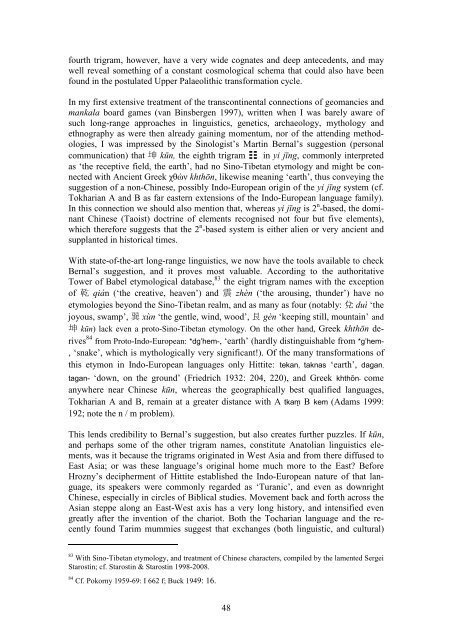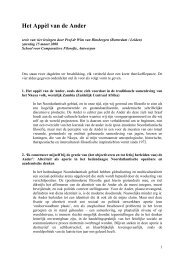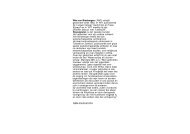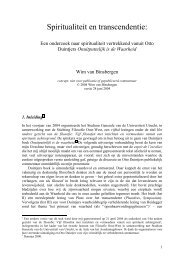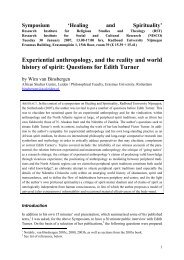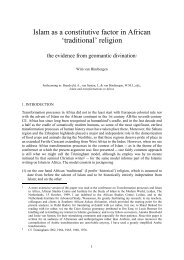Izanami giving birth to Kagutsuchi / Fire - Shikanda.net
Izanami giving birth to Kagutsuchi / Fire - Shikanda.net
Izanami giving birth to Kagutsuchi / Fire - Shikanda.net
You also want an ePaper? Increase the reach of your titles
YUMPU automatically turns print PDFs into web optimized ePapers that Google loves.
fourth trigram, however, have a very wide cognates and deep antecedents, and may<br />
well reveal something of a constant cosmological schema that could also have been<br />
found in the postulated Upper Palaeolithic transformation cycle.<br />
In my first extensive treatment of the transcontinental connections of geomancies and<br />
mankala board games (van Binsbergen 1997), written when I was barely aware of<br />
such long-range approaches in linguistics, ge<strong>net</strong>ics, archaeology, mythology and<br />
ethnography as were then already gaining momentum, nor of the attending methodologies,<br />
I was impressed by the Sinologist’s Martin Bernal’s suggestion (personal<br />
communication) that 坤 kūn, the eighth trigram ☷ in yi jīng, commonly interpreted<br />
as ‘the receptive field, the earth’, had no Sino-Tibetan etymology and might be connected<br />
with Ancient Greek χθών khthōn, likewise meaning ‘earth’, thus conveying the<br />
suggestion of a non-Chinese, possibly Indo-European origin of the yi jīng system (cf.<br />
Tokharian A and B as far eastern extensions of the Indo-European language family).<br />
In this connection we should also mention that, whereas yi jīng is 2 n -based, the dominant<br />
Chinese (Taoist) doctrine of elements recognised not four but five elements),<br />
which therefore suggests that the 2 n -based system is either alien or very ancient and<br />
supplanted in his<strong>to</strong>rical times.<br />
With state-of-the-art long-range linguistics, we now have the <strong>to</strong>ols available <strong>to</strong> check<br />
Bernal’s suggestion, and it proves most valuable. According <strong>to</strong> the authoritative<br />
Tower of Babel etymological database, 83 the eight trigram names with the exception<br />
of 乾 qián (‘the creative, heaven’) and 震 zhèn (‘the arousing, thunder’) have no<br />
etymologies beyond the Sino-Tibetan realm, and as many as four (notably: 兌 duì ‘the<br />
joyous, swamp’, 巽 xùn ‘the gentle, wind, wood’, 艮 gèn ‘keeping still, mountain’ and<br />
坤 kūn) lack even a pro<strong>to</strong>-Sino-Tibetan etymology. On the other hand, Greek khthōn derives<br />
84 from Pro<strong>to</strong>-Indo-European: *dg’hem-, ‘earth’ (hardly distinguishable from *g’hem-<br />
, ‘snake’, which is mythologically very significant!). Of the many transformations of<br />
this etymon in Indo-European languages only Hittite: tekan, taknas ‘earth’, dagan,<br />
tagan- ‘down, on the ground’ (Friedrich 1932: 204, 220), and Greek khthōn- come<br />
anywhere near Chinese kūn, whereas the geographically best qualified languages,<br />
Tokharian A and B, remain at a greater distance with A tkam<br />
B kem (Adams 1999:<br />
192; note the n / m problem).<br />
This lends credibility <strong>to</strong> Bernal’s suggestion, but also creates further puzzles. If kūn,<br />
and perhaps some of the other trigram names, constitute Ana<strong>to</strong>lian linguistics elements,<br />
was it because the trigrams originated in West Asia and from there diffused <strong>to</strong><br />
East Asia; or was these language’s original home much more <strong>to</strong> the East? Before<br />
Hrozny’s decipherment of Hittite established the Indo-European nature of that language,<br />
its speakers were commonly regarded as ‘Turanic’, and even as downright<br />
Chinese, especially in circles of Biblical studies. Movement back and forth across the<br />
Asian steppe along an East-West axis has a very long his<strong>to</strong>ry, and intensified even<br />
greatly after the invention of the chariot. Both the Tocharian language and the recently<br />
found Tarim mummies suggest that exchanges (both linguistic, and cultural)<br />
83 With Sino-Tibetan etymology, and treatment of Chinese characters, compiled by the lamented Sergei<br />
Starostin; cf. Starostin & Starostin 1998-2008.<br />
84 Cf. Pokorny 1959-69: I 662 f; Buck 1949: 16.<br />
48


